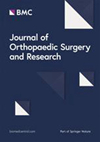
肌腱是肌肉骨骼系統(tǒng)的軟組織,旨在促進(jìn)關(guān)節(jié)運(yùn)動(dòng)。肌腱表現(xiàn)出與它們的功能相匹配的廣泛的力學(xué)特性,因此,幾十年來(lái)一直引起研究人員的興趣。尺寸是肌腱性能的一個(gè)重要方面。組織尺寸的變化通常被視為損傷和退化的跡象,因?yàn)樗赡芤馕吨M織的炎癥或普遍紊亂。尺寸對(duì)于確定材料的力學(xué)性能和行為也很重要,特別是應(yīng)力、應(yīng)變和彈性模量。這使得尺寸在退化肌腱的力學(xué)研究中具有重要意義。此外,肌腱的尺寸在計(jì)劃收獲肌腱轉(zhuǎn)移和關(guān)節(jié)重建的目的是有用的。歷史上,為了準(zhǔn)確測(cè)量軟組織的尺寸,人們使用了許多方法,因?yàn)闇y(cè)量不當(dāng)會(huì)導(dǎo)致計(jì)算特性的較大誤差。這些方法可以分為破壞性(通過(guò)近似),接觸和非接觸,并可以考慮在體內(nèi)和體外。
Tendons are soft tissues of the musculoskeletal system that are designed to facilitate joint movement. Tendons exhibit a wide range of mechanical properties matched to their functions and, as a result, have been of interest to researchers for many decades. Dimensions are an important aspect of tendon properties.Change in the dimensions of tissues is often seen as a sign of injury and degeneration, as it may suggest inflammation or general disorder of the tissue. Dimensions are also important for determining the mechanical properties and behaviours of materials, particularly the stress, strain, and elastic modulus. This makes the dimensions significant in the context of a mechanical study of degenerated tendons. Additionally, tendon dimensions are useful in planning harvesting for tendon transfer and joint reconstruction purposes.Historically, many methods have been used in an attempt to accurately measure the dimensions of soft tissue, since improper measurement can lead to large errors in the calculated properties. These methods can be categorised as destructive (by approximation), contact, and non-contact and can be considered in terms of in vivo and ex vivo.
SCI熱門(mén)推薦期刊 >
SCI常見(jiàn)問(wèn)題 >
職稱論文常見(jiàn)問(wèn)題 >
EI常見(jiàn)問(wèn)題 >